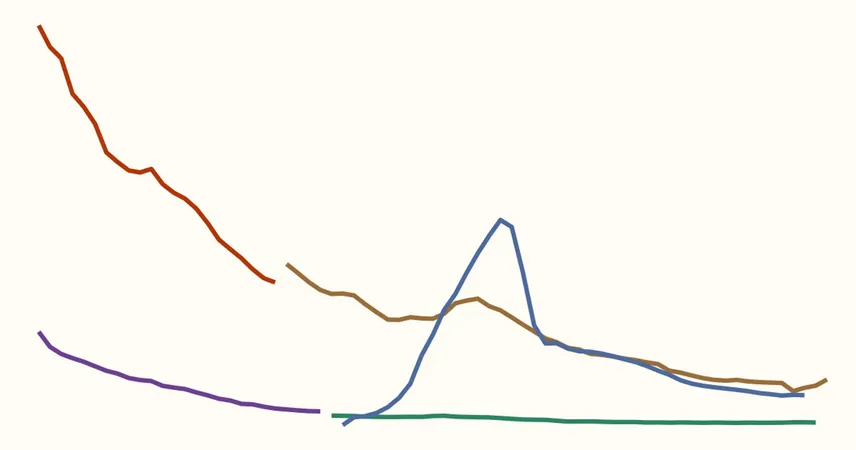
Unveiling the Hidden Flood Trigger: Soils on the Brink!
2025-06-16
Author: Jia
The Shocking Connection Between Soil Moisture and Floods
Researchers have made a groundbreaking discovery regarding the devastating floods that can follow atmospheric river storms. A study published in the Journal of Hydrometeorology revealed that saturated soils are a significant factor in the severity of floods across the West Coast—an alarming find that could change how we understand flood risks.
The Study's Eye-Opening Findings
Analyzing over 43,000 atmospheric river events from 1980 to 2023, scientists found that when the ground is already soaked, flood peaks can spike by an astonishing 2 to 4.5 times. This crucial insight helps to explain why some storms, despite similar strength, lead to catastrophic flooding while others do not.
Lead researcher Mariana Webb, a Ph.D. candidate at DRI and the University of Nevada, Reno, emphasized, "Flooding is influenced not just by the storm's size but by conditions on the land. This shows that pre-event soil moisture can significantly amplify flood events." A critical threshold of soil wetness appears to trigger larger flows, a factor often overlooked in flood models.
Where Soil Matters Most—A Contrast of Regions!
The study also pinpointed regions where soil moisture plays a pivotal role in flood risk. In arid areas like California and southwestern Oregon, the combination of shallow, clay-heavy soils and limited water storage makes saturation particularly dangerous.
In contrast, lush areas such as Washington and the Sierra Nevada can handle more water, meaning soil saturation poses less of a threat there. Webb stated, "Understanding the watersheds where soil moisture is most variable can significantly refine flood predictions."
The Call for Enhanced Monitoring
Currently, soil moisture data is sparse, making flood predictions tricky. Advanced monitoring, especially in high-risk watersheds, could revolutionize early warning systems. By obtaining real-time data on soil conditions, experts could make more accurate predictions as the frequency and intensity of atmospheric rivers increase.
Bridging the Gap in Scientific Understanding
Webb's research emphasizes the intersection of atmospheric science and hydrology, two fields that often work in silos. By merging these disciplines, the study aims to enhance our understanding and management of flood risks. Collaborating with DRI ecohydrologist Christine Albano, Webb has contributed new insights into how soil saturation impacts flood dynamics.
Albano noted the significance of their findings: "By combining atmospheric river forecasts with soil moisture data, we can vastly improve early warning systems, ultimately saving lives and property in flood-prone areas." This research underscores the vital connection between land conditions and flood impact, making it clear that managing soil moisture is as crucial as predicting rain.




 Brasil (PT)
Brasil (PT)
 Canada (EN)
Canada (EN)
 Chile (ES)
Chile (ES)
 Česko (CS)
Česko (CS)
 대한민국 (KO)
대한민국 (KO)
 España (ES)
España (ES)
 France (FR)
France (FR)
 Hong Kong (EN)
Hong Kong (EN)
 Italia (IT)
Italia (IT)
 日本 (JA)
日本 (JA)
 Magyarország (HU)
Magyarország (HU)
 Norge (NO)
Norge (NO)
 Polska (PL)
Polska (PL)
 Schweiz (DE)
Schweiz (DE)
 Singapore (EN)
Singapore (EN)
 Sverige (SV)
Sverige (SV)
 Suomi (FI)
Suomi (FI)
 Türkiye (TR)
Türkiye (TR)
 الإمارات العربية المتحدة (AR)
الإمارات العربية المتحدة (AR)